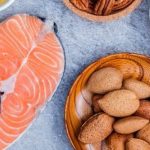According to the science on which Cryolipolysis® is based, you can. A new technique called Cool Sculpting has hit the market and is doing wonders for patients who wish to target certain areas for fat loss.
While not intended as a weight loss replacement or alternative, Cool Sculping is ideal for those with problem areas that do not seem to reshape or respond to exercise and diet alone.
Based on an observation made my scientists while studying children eating popsicles, this procedure is non-invasive. Scientists at Harvard noticed that some children who ate popsicles formed dimples in their cheeks. Dieter Manstein, MD and R. Rox Anderson, MD concluded that the popsicles were freezing off small pockets of fat cells and that this might be useful in other applications.
That is the basis for Cryolipolysis®, the science on which the CoolSculpting procedure is founded. Cold can target fat cells without damaging the skin or surrounding tissue.
Coolsculpting reduces the number of fat cells in the treated area by as much as 25%. During weight loss, the fat cells are not eliminated, they just shrink. Fat cells when eliminated, never return.
Treatments are customized to your body and tailored to fit your goals. It has been FDA approved and has been performed safely for millions of people. Side effects are rare, generally mild and usually subside fairly quickly.
If you are interested in CoolSculpting you can find a board certified dermatologist in the SW Florida area by visiting www.ipalc.org/find

